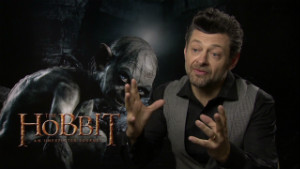The Art of Movement is
a monthly show that highlights the most significant innovations in
science and technology that are helping shape our modern world.
(CNN) -- He's the face of motion-capture performance.
Whether it's as the
nefarious and rather grotesque "Gollum," Tintin's beloved best friend
and sidekick, the grouchy "Captain Haddock," or more recently the
intellectually enhanced chimp ringleader "Caesar" from the "Planet of
the Apes" franchise, Andy Serkis is synonymous with the groundbreaking
movie technique.
Over the years countless
fans and fellow actors -- including Serkis' "Rise of the Planet of the
Apes" co-star James Franco -- have called for the motion-capture pioneer
to receive an Oscar for bringing his characters to life. So far to no
avail.
 Andy Serkis on acting
Andy Serkis on acting
 'Hobbit' stars weigh in on 3-D critics
'Hobbit' stars weigh in on 3-D critics
Online devotees argue
that Serkis' Oscar "snubs" come from the fact that the Academy Awards
judges are wary of motion-capture performances. Whether or not that is
true, not many truly understand how the British actor and other "mo-cap"
performers achieve such sincerely emotional portrayals of
computer-generated protagonists.
"I think our ability to
have actors now on stage playing other creatures or on location on set
has been fantastic both for the creatures they're portraying and, you
know, perhaps the human characters they're playing off in the scene,"
explains Dan Barret, animation supervisor at Weta Digital,
the New Zealand-based digital effects firm that worked on "Dawn of the
Planet of the Apes," "Tintin," "The Hobbit" and many other blockbusters.
"It's improved
performances and opened up a whole lot of opportunities as far as how
much work we can get through, how much motion we can get," says Barret.
"Generating all of this stuff with key frames can take a long time. It's
been a huge revolution."

No comments:
Post a Comment